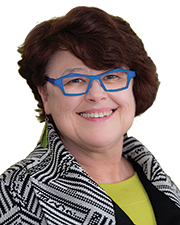
What was your greatest professional achievement or most notable project in the last 12 months? I can’t pick one. Three Studio G projects stand out – Excel Academy Greenway Middle School, Taunton Men’s Recovery from Addiction Program (MRAP), and E+ Highland. Excel’s new East Boston middle school was added over the parking lot of Excel Academy High School, which we designed 8 years ago. MRAP completes renovation of a 1950’s Taunton State Hospital building with three floors of therapeutic residential units for detox and addiction recovery, and encompasses a Deep Energy Retrofit with all-electric systems to transform building performance. The new 23-unit E+ Highland will provide energy-positive home ownership for low income Boston residents.
What steps have you taken to ensure the continued success of your firm? Centering our firm values to preserve our planet, meet social needs, and help develop an economy that serves local communities through public-interest architecture has ensured Studio G’s success. Our 28th anniversary is April 1. We build sustainable communities through designing schools, childcare, housing, workplaces and civic institutions serving newborns to seniors. The diversity of our clients and portfolio have served us well through this and earlier times. As a WBE firm, our diverse staff – 65% women, 29% LBGTQIA+, and 29% people of color – bring unique life experiences and contribute to our success and our ability to address the needs of client groups, stakeholders, and building inhabitants.
What are you most looking forward to post-pandemic? The freedom to move freely about the city I love and enjoy the places that have been closed or limited, seeing friends and colleagues in person, gathering Studio G’s collaborative team back together in the office, ease of visiting clients and projects, and moving past the hardships of this past year toward a more equitable and sustainable city and state.
How have you adapted and changed in the last 12 months? I’m an extrovert, so working from home is against my grain. I like quick desk check ins to review design, give comments and make sure all is on track. We organize quick team meetings when an issue arises. I’m old-school, drawing on trace paper with a pen! That work style is challenged when in digital-only communication. Even I have adapted; and I’ve been incredibly pleased at how seamlessly our team moved home and didn’t miss a deadline in our work.
Why should women consider a career in construction? For me, architecture provides the chance to be aspirational and pragmatic, creative and technical, to give back to my community, and enjoy seeing my vision become a concrete reality. I hope other women will enjoy the same because there is opportunity for growth personally and professionally, and because women’s leadership styles make an enormous contribution.
Starting out in the construction business, who or what empowered you? First, I am a feminist, so being told women can’t, is a guarantee I will. Three friends who had given up architecture warned me in the early 1980’s of enormous obstacles for women. That made me determined to succeed. I was in the first M.Arch. class at MIT’s Department of Architecture with 50% women. We bonded almost instantly and formed a Women in Design group that carried all of us through the program at a time when fewer than 3% of registered architects were women. And we supported each other to pursue our licenses as soon as we could to change the face and reality of the profession.








